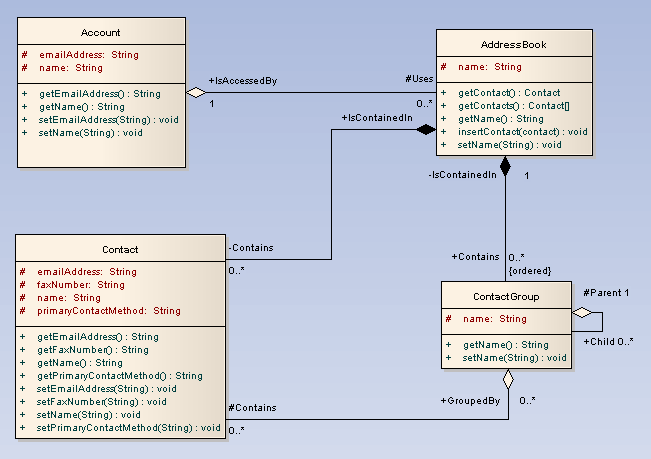The Class diagram captures the logical structure of the system; the Classes and things that make up the model. It is a static model, describing what exists and what attributes and behavior it has, rather than how something is done. Class diagrams are most useful to illustrate relationships between classes and interfaces. Generalizations, aggregations, and associations are all valuable in reflecting inheritance, composition or usage, and connections, respectively.
Example Diagram
The pale Aggregation relationship indicates that the Class Account uses AddressBook, but does not necessarily contain AddressBook. The dark Composite Aggregation by the other connectors indicate ownership or containment by the target Classes (at the diamond end) of the source Classes.

Toolbox Elements and Connectors
Select Class diagram elements and connectors from the Class pages of the Enterprise Architect UML Toolbox.
Tip: Click on the elements and connectors below for more information.
See Also
OMG UML Specification
The OMG UML specification (UML Superstructure Specification, v2.0, p. 6) states:
"A diagram that shows a collection of declarative (static) model elements, such as classes, types, and their contents and relationships."


